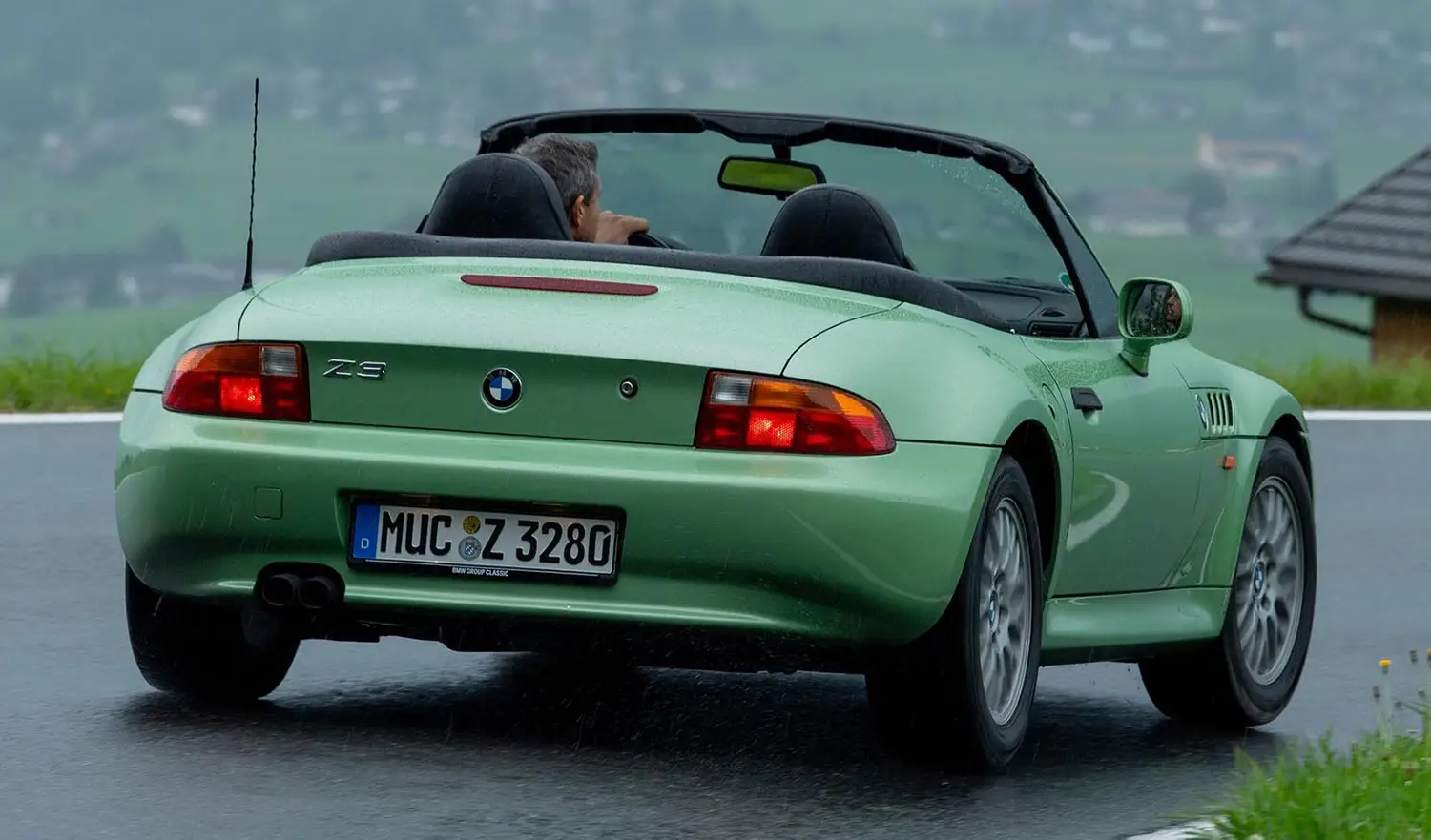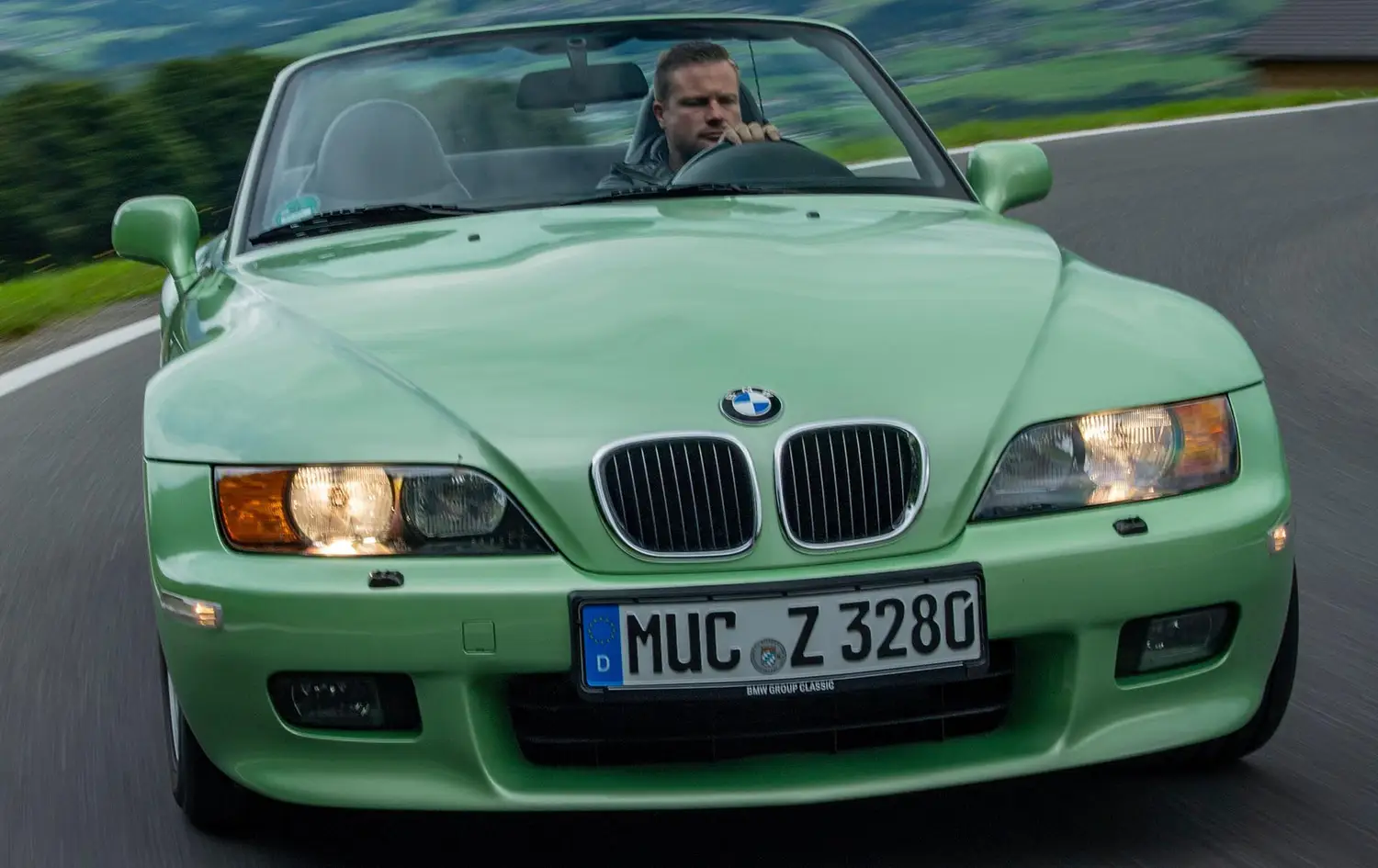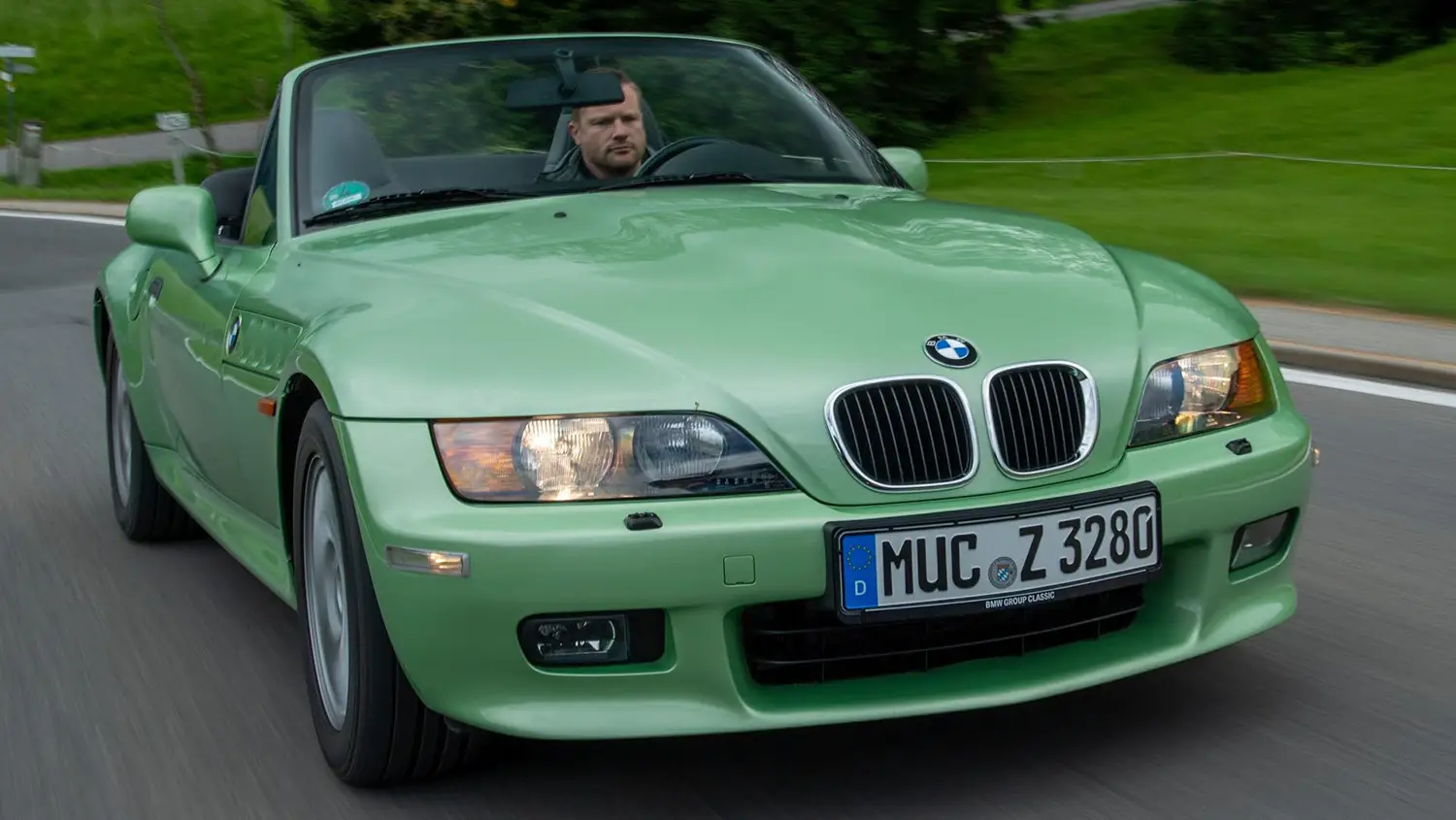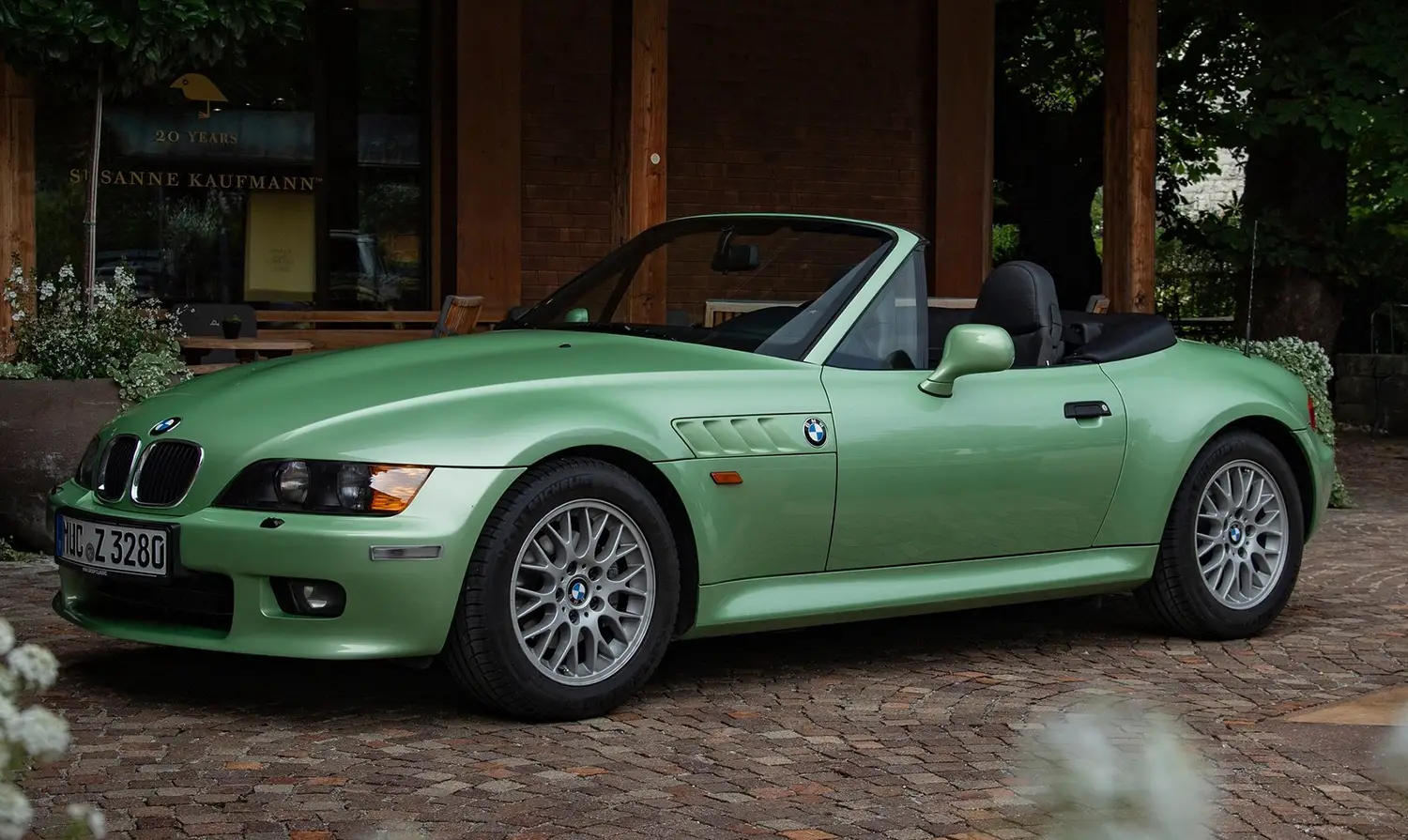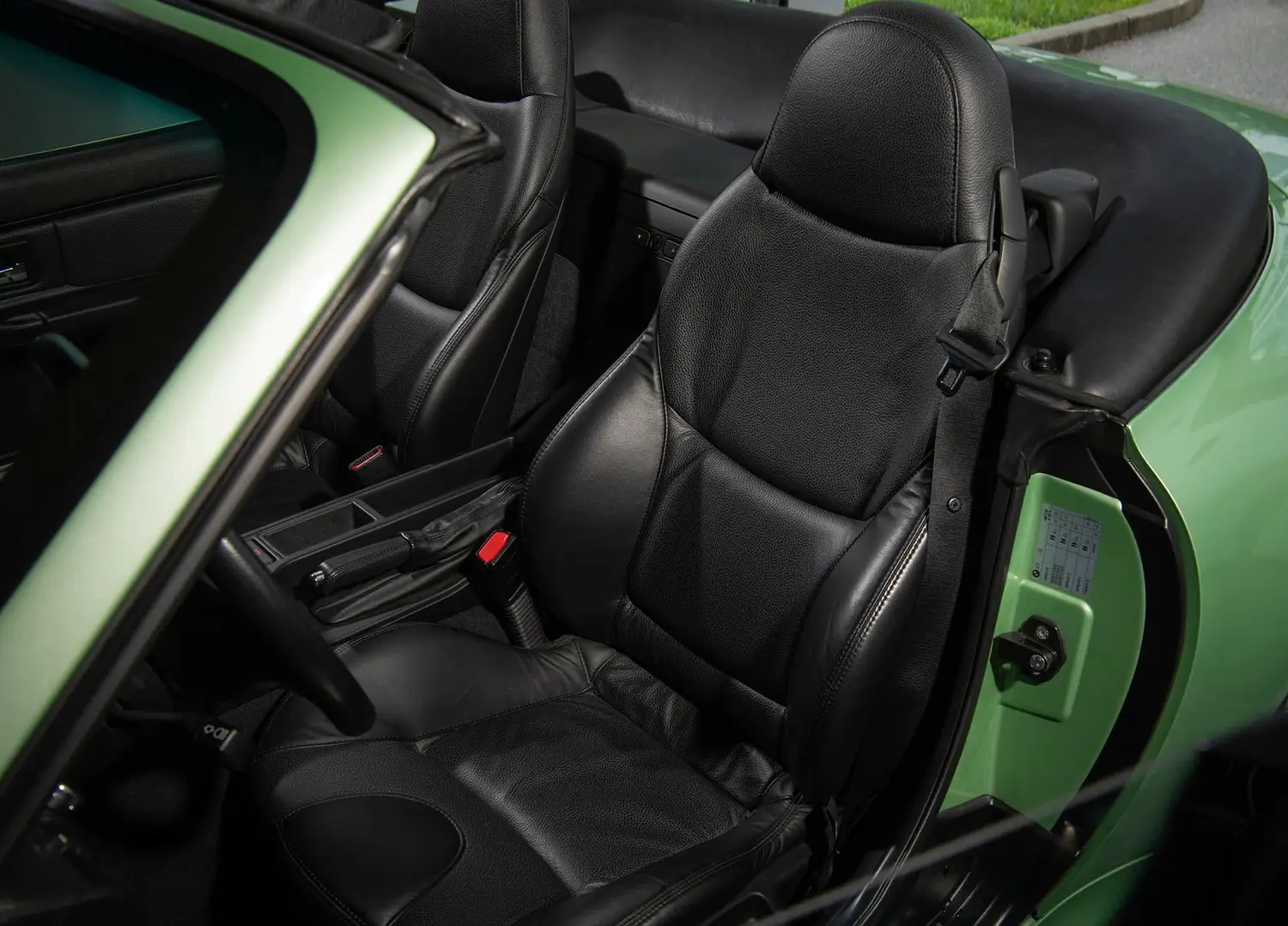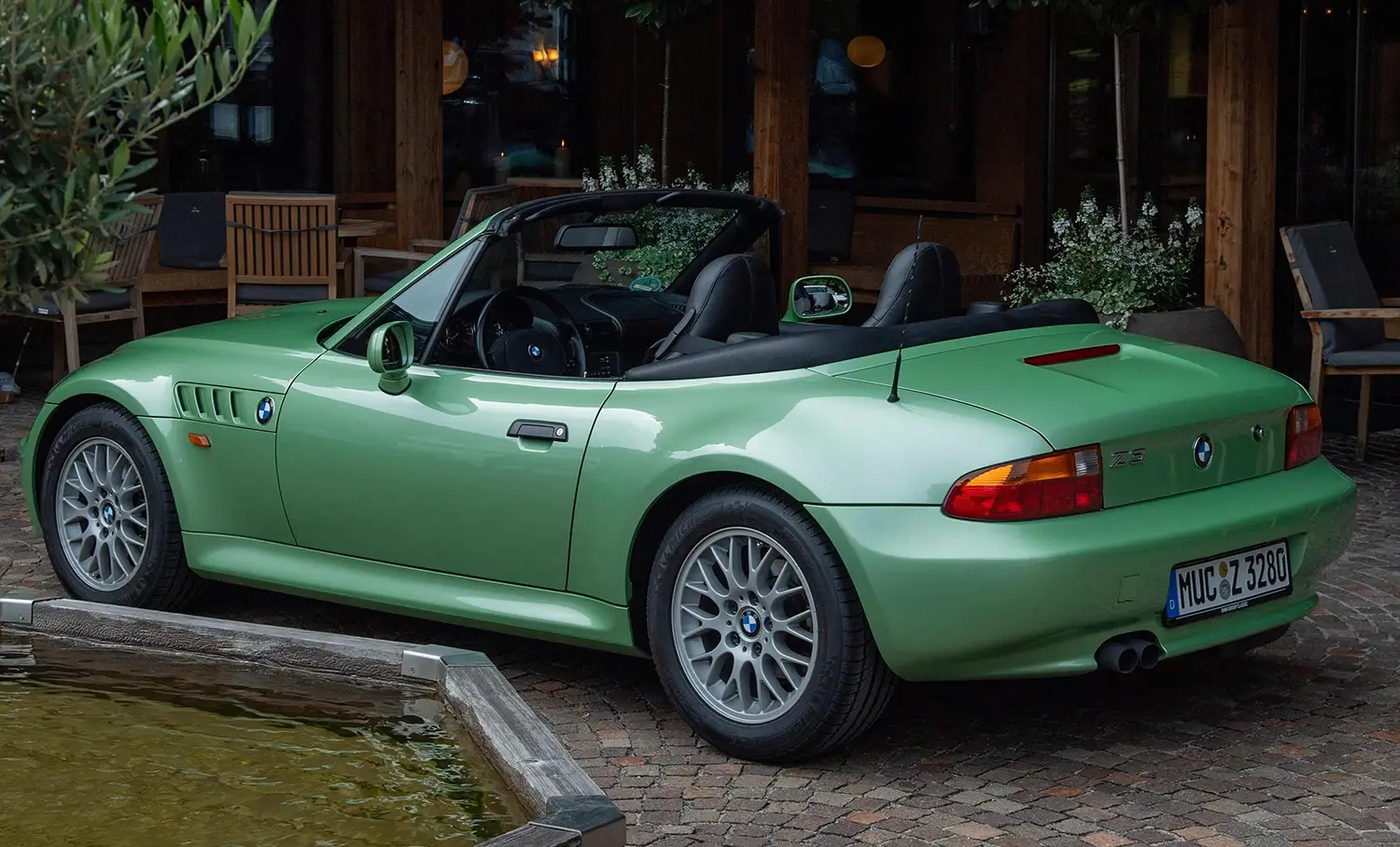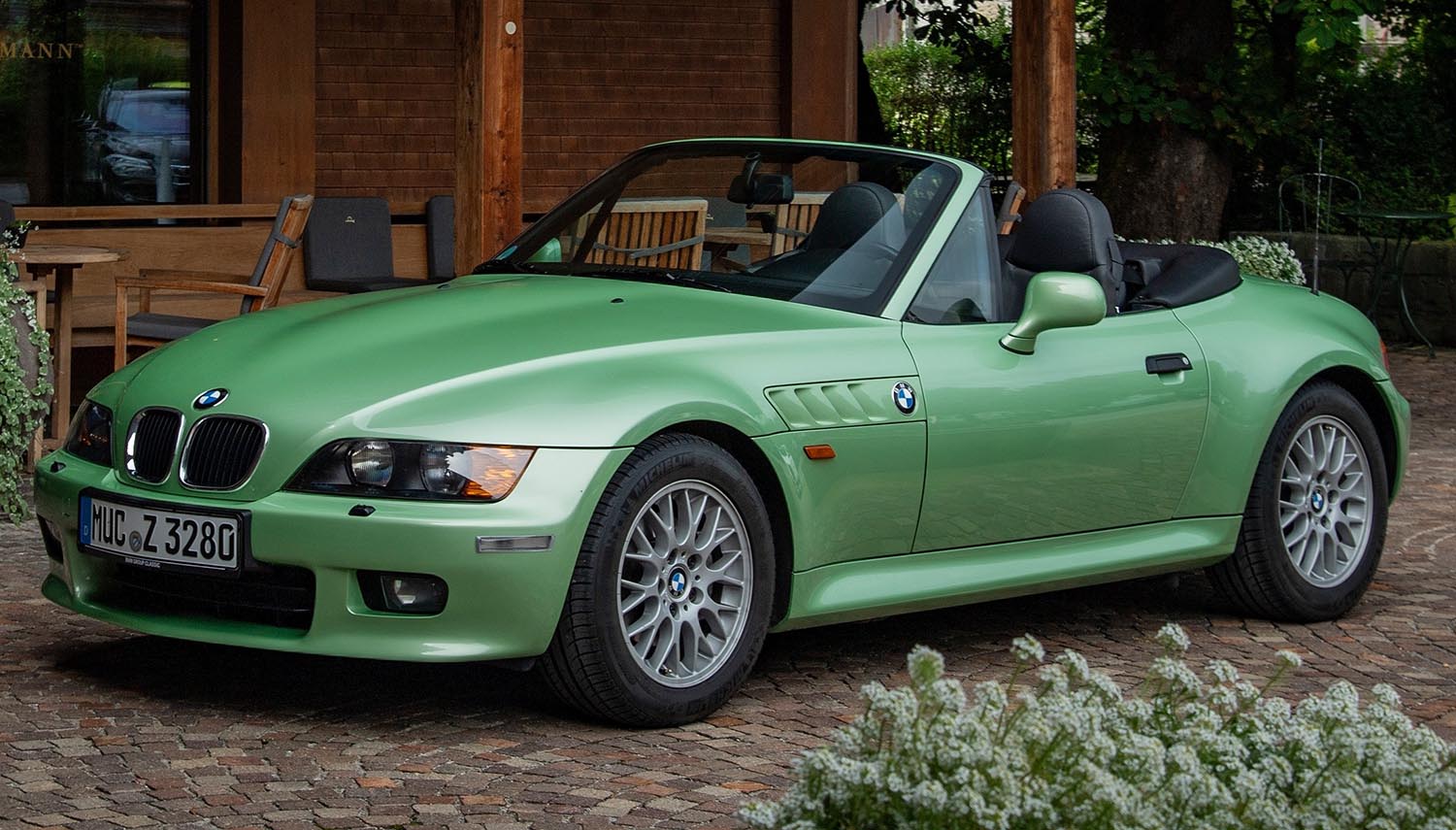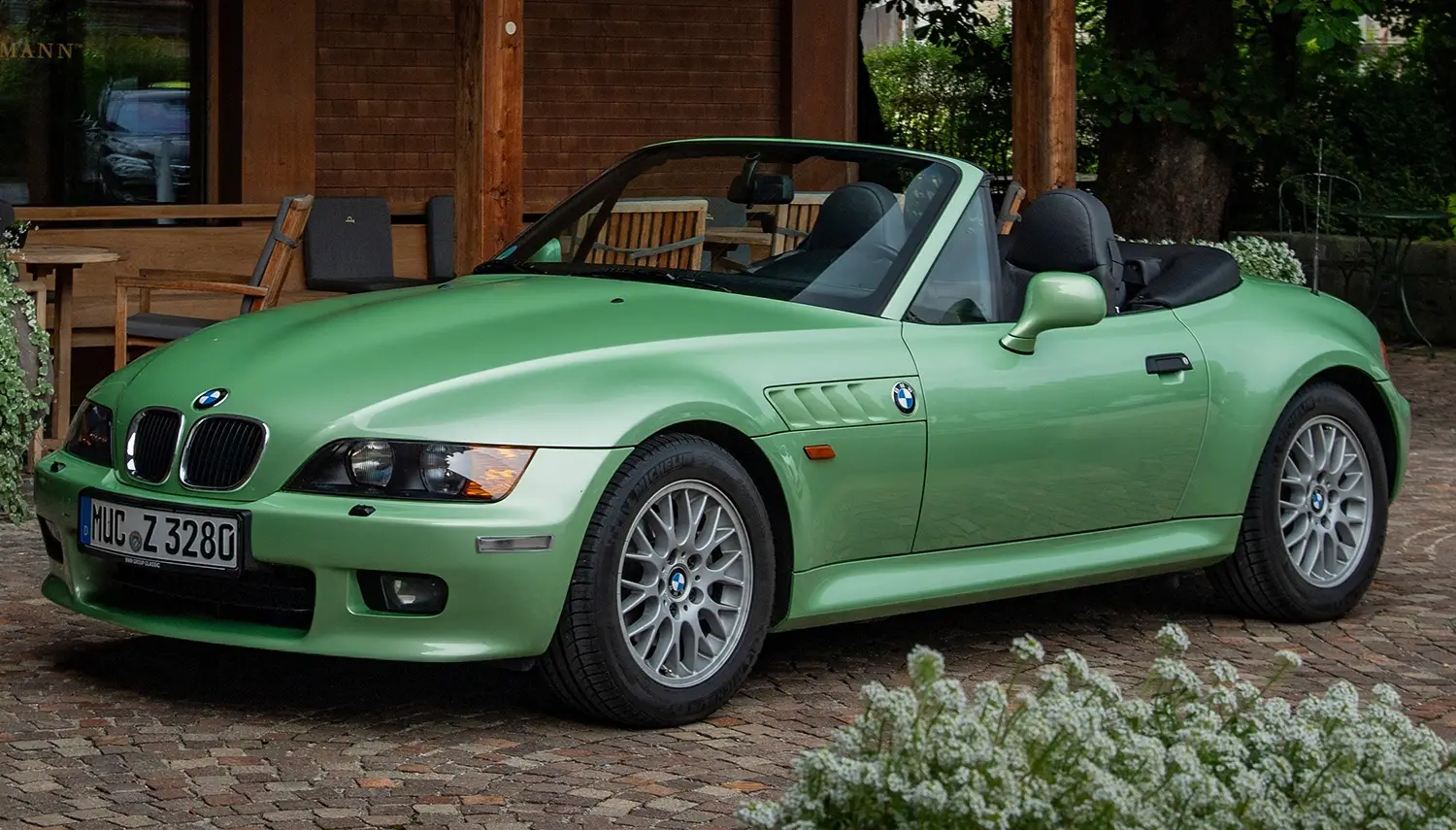
The 1999 BMW Z3 Roadster arrived with subtle but meaningful updates that kept the compact convertible fresh and competitive. The first Z3s had already proven popular worldwide, and this mid-cycle update ensured the model stayed relevant as it entered the final years of the 1990s. The 1999 BMW Z3 Roadster balanced design refinement with driving performance, making it a model that enthusiasts still talk about today.
Exterior Design Updates of the 1999 BMW Z3 Roadster
The most visible change was at the rear, where wider wheel arches gave the roadster a bolder stance. A re-styled trunk and new L-shaped rear lights complemented the look, while the redesigned rear bumper tied it together. The waistline also took on a new shape, rising more distinctly toward the back to accentuate the Z3’s classic roadster proportions.
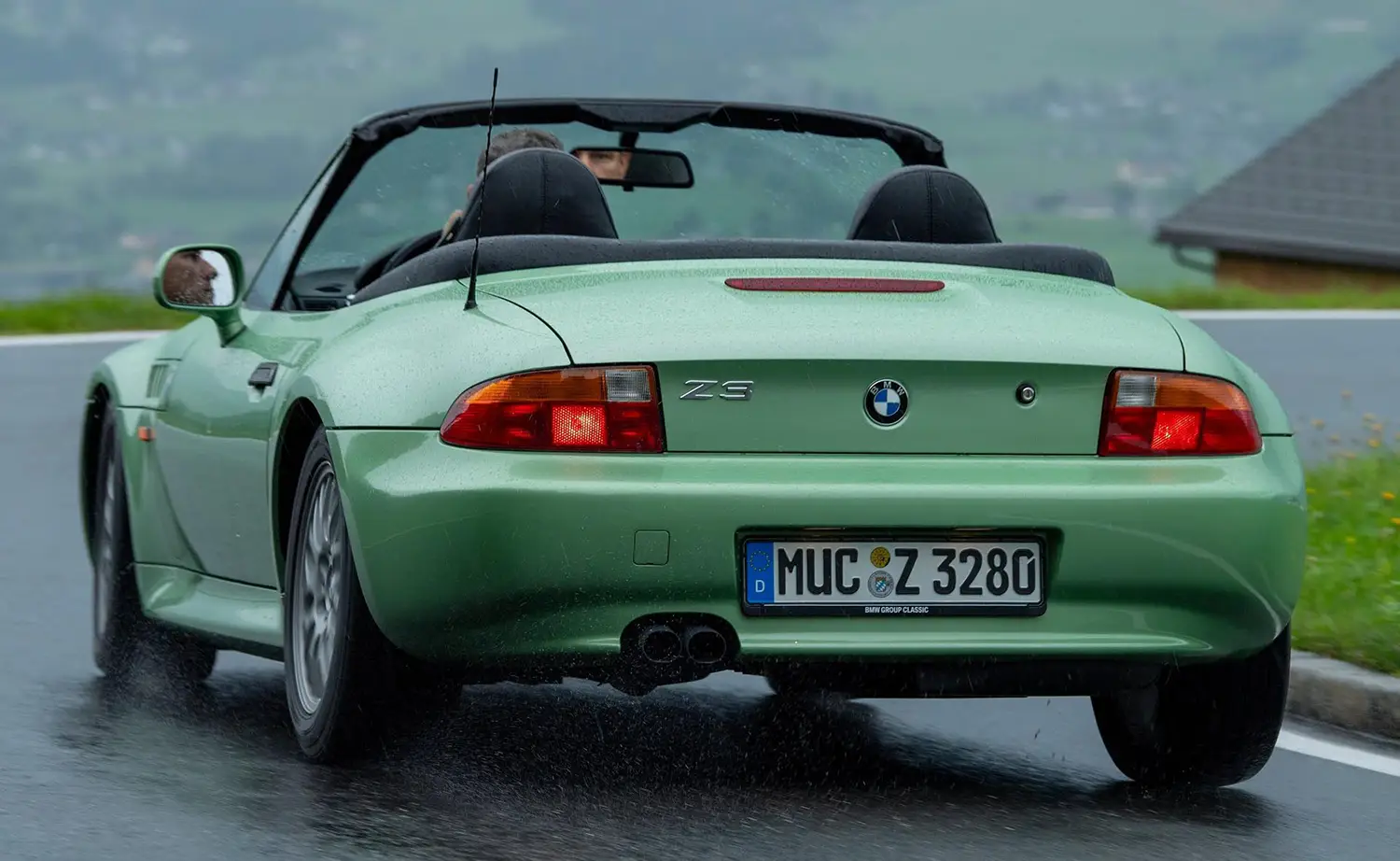
At the front, the car featured fully enclosed headlights and a fresh take on BMW’s signature kidney grille. New wheel designs rounded out the updates, delivering a sharper presence that fit with the late-nineties styling trends. These refinements ensured the Z3 maintained its strong visual identity without losing its instantly recognizable silhouette.
Interior Refinements in the 1999 BMW Z3 Roadster
Inside, BMW addressed areas where buyers wanted more comfort and a sportier feel. The 1999 model gained a smaller three-spoke steering wheel with dual-stage airbag deployment for safety and ergonomics. The dashboard and center console were reworked with more modern, tactile plastics. Even the roof lining gained improved insulation, cutting down wind noise and enhancing comfort during open-top driving.
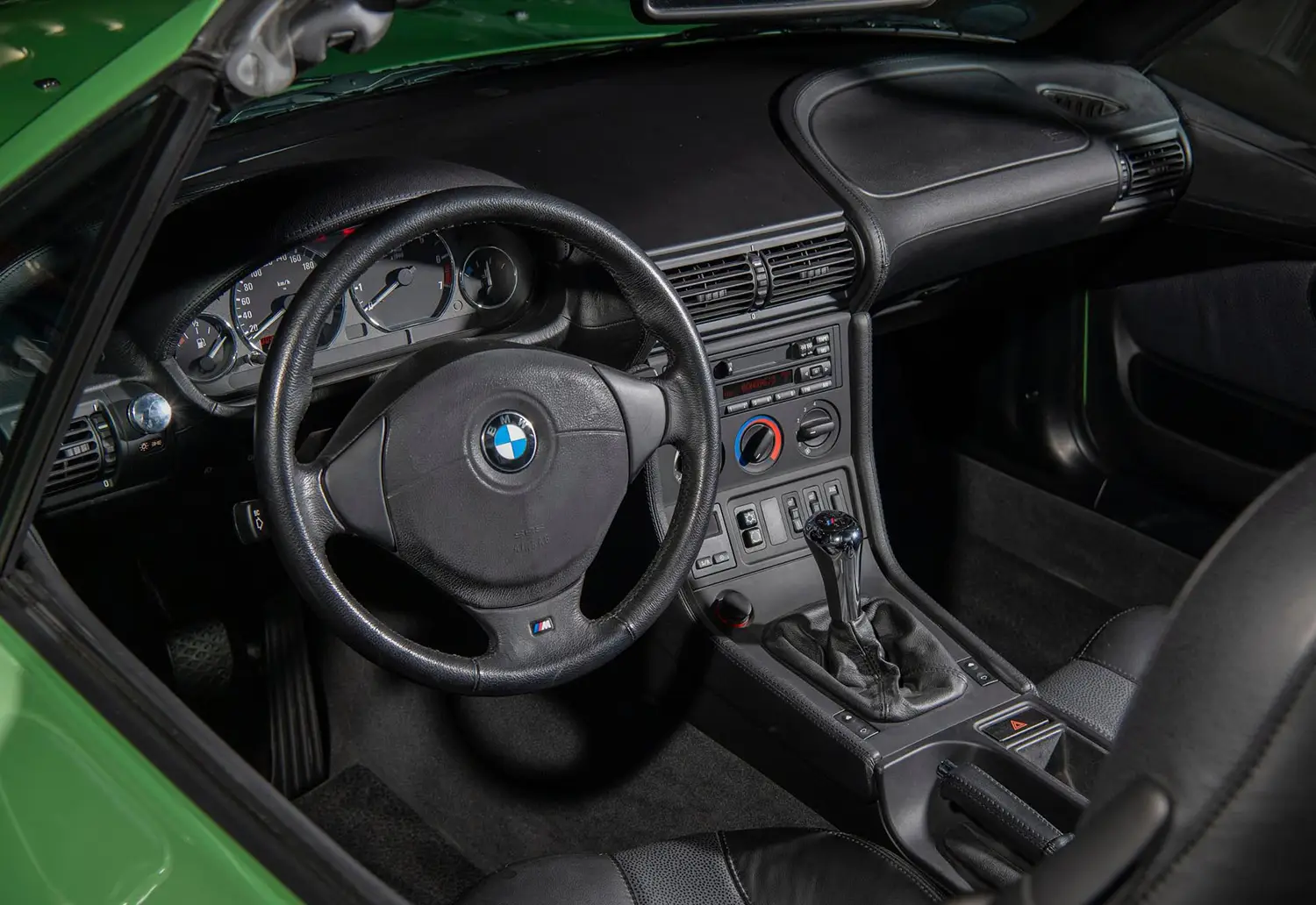
The result was an interior that felt more polished while still keeping the simple, driver-focused layout that roadster owners valued.
Performance and Engine Options of the 1999 BMW Z3 Roadster
Performance was a key part of the Z3’s appeal, and the 1999 lineup reflected that. Depending on the market, buyers could choose between multiple four- and six-cylinder engines.
The entry-level versions offered a 1.9-liter four-cylinder producing around 118 horsepower, giving the roadster a balance between light weight and usable performance. Stepping up, the 2.5-liter and 2.8-liter inline-six engines pushed out between 170 and 190 horsepower, providing stronger acceleration and the kind of smooth power delivery that BMW’s straight-sixes were known for.
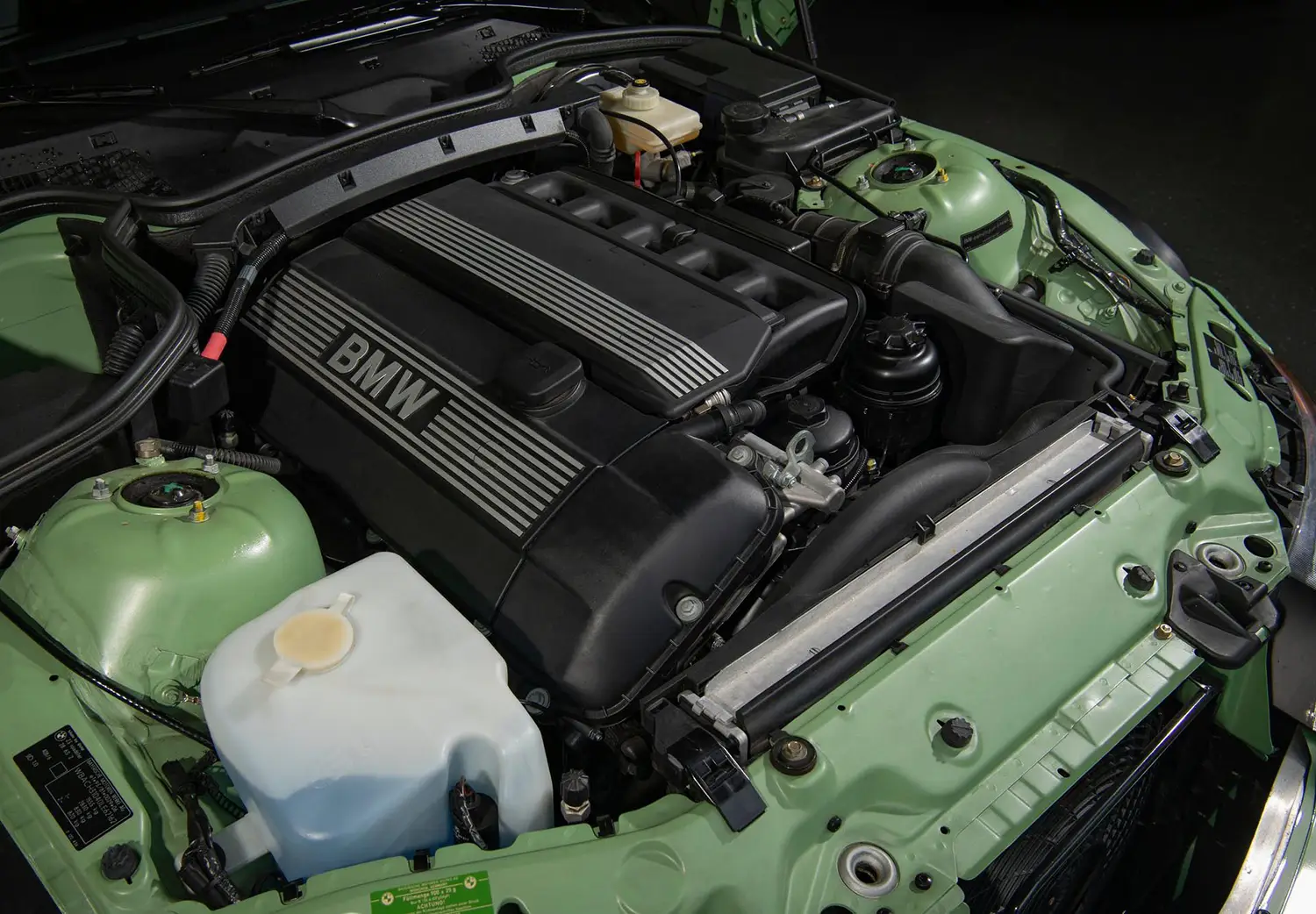
Paired with either a five-speed manual or optional automatic transmission, the Z3 delivered a driving experience focused on balance and responsiveness. Rear-wheel drive, precise steering, and its short wheelbase made it agile on twisty roads while still comfortable for longer drives.
The Lasting Impact of the 1999 BMW Z3 Roadster
By 1999, BMW had already sold hundreds of thousands of Z3s, cementing its role as a key model in the company’s lineup. The updates that year were less about reinvention and more about refinement. They gave the car a fresher face, a sharper driving environment, and more confident performance to carry it into the new decade.
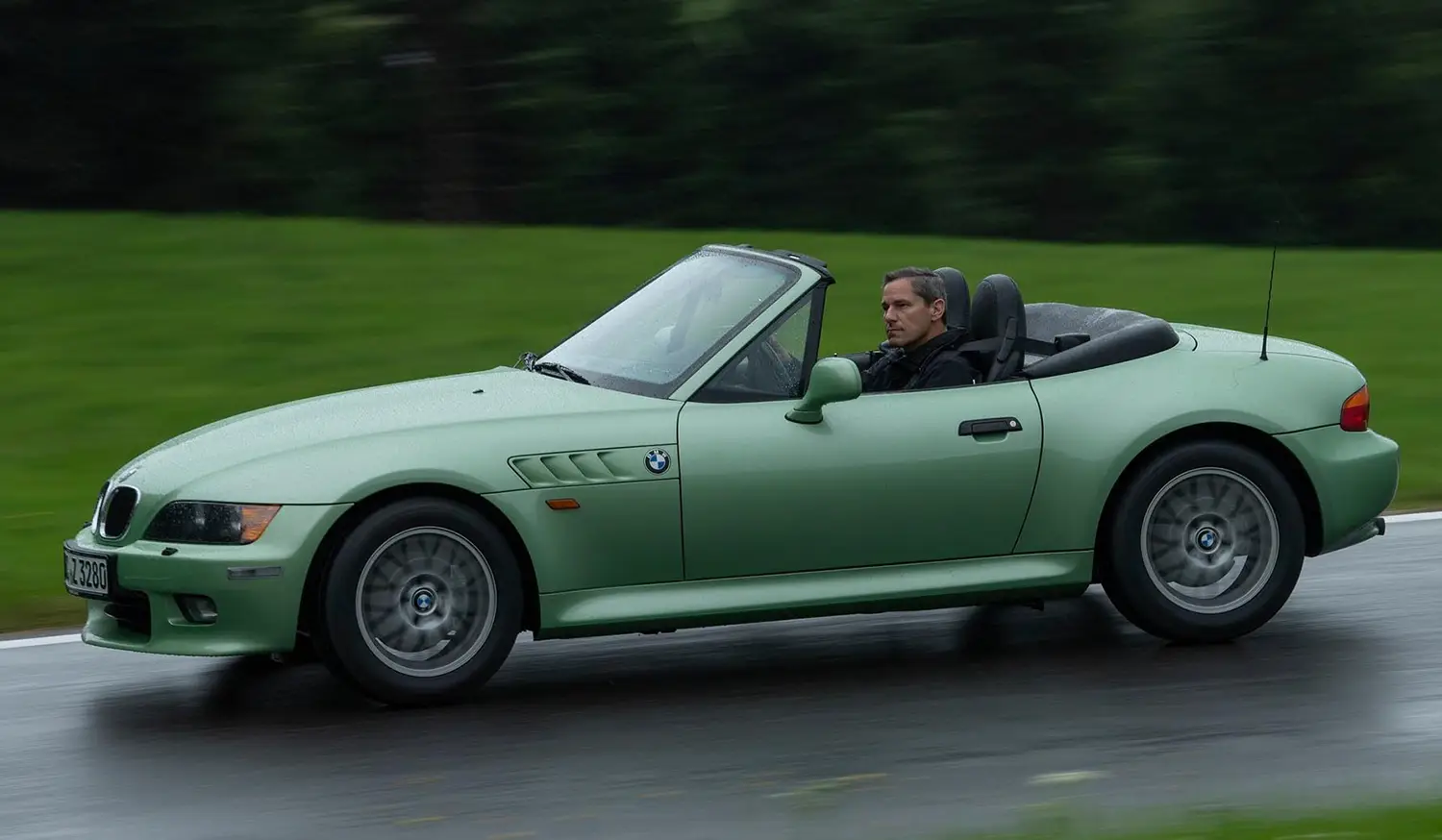
The 1999 BMW Z3 Roadster remains a symbol of the brand’s ability to mix everyday usability with open-air driving enjoyment. It showed that small changes, when done right, can keep a model exciting without losing the essence of what made it appealing in the first place.
Disclaimer: Content on this site is for informational purposes only. Vehicle specs, pricing, and availability may change. Always verify details with official sources before making decisions. Opinions are those of the authors.
Source: BMW
